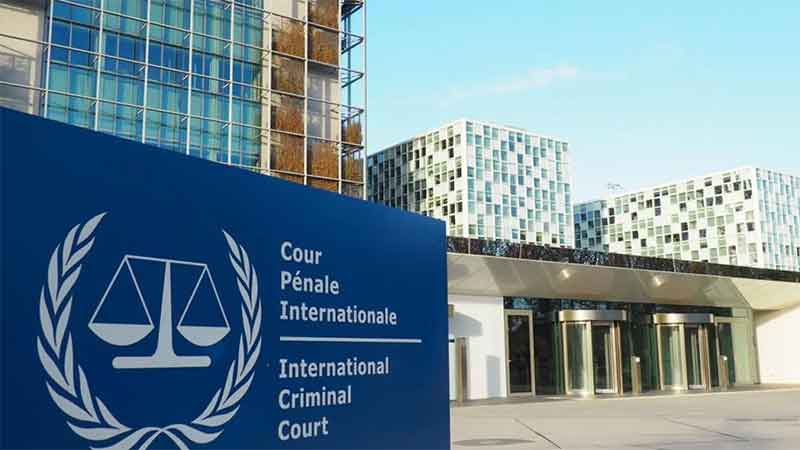
About a month ago, when, as it seems now, the covid-19 world was still young and economy reopenings were still few, Mike Davis, the American labor organizer, wrote an ominous piece titled, Reopening the Economy Will Send Us to Hell. It almost seemed contrary to the common wisdom that the world needed to reopen as it was choking because of the loss of economic activity.
The point Davis made, fully aware of his role in the labor movement space, was that the call for reopening was being rammed through without regard to workers’ safety in a world where the virus was still abroad. The reasons for reopening, if not outright an act hiding behind exceptionalism, were an attempt to regain business with little concern for workers.
“People desperately need to go back to work and save what they can of their lives. But heeding the siren call of the MAGA [Make America Great Again] demonstrators, puppets on strings manipulated by hedge funds and billionaire casino owners, to “reopen the economy” would only result in tragedy,” he observed.
This is a concern that has been echoed in various quarters, though it seems very hard to make the case. A TIME magazine report, titled ‘As Washington D.C. Weighs Reopening, African Americans in the Nation’s Capital Brace for the Worst’, echoed similar views about the effect of reopening on the most marginalized.
It cites D.C. Mayor Muriel Bowser’s concerns on how the federal government in the US views the impact of reopening: “There is this kind of a callous calculation happening that surprises me,” she says. “It’s kind of like, ‘Well, this COVID is killing old people and, Oh, well. It’s killing black people, and poor people and essential workers. Oh, well.’”
In India, the Economic & Political Weekly took up this in its editorial of May 16 appropriately titled Living with Covid-19, pointing out that such statements by governments seek to hide their limitation in ensuring the citizens’ safety: “Living with the virus…flies in the face of official claims that are simultaneously made by the government to ensure the people that the country is medically as well as infrastructurally well-equipped to deal with the virus.”
The shift in the state’s stance was especially marked in the prime minister’s last speech to the nation, as noted by a piece in the Financial Times: “[W]ith the economy collapsing and public finances severely strained, New Delhi now wants Indians to forget their fears and get back to work. In his most recent national address, Mr Modi made no mention of containing the virus or even ‘flattening the curve’. Instead, he urged Indians to look forward, rebuild and learn to live with the disease. ‘Corona will remain part of our lives for a long time,’ he said. ‘But we cannot allow our lives to be confined only around corona.’”
With the return of the migrants, one hears constant news of the surge of Covid-19 cases, such as those with headings like “Returning migrants cause surge of Covid-19 cases in rural Bengal,” or “Karnataka: Returning migrants push up case count.” The onus and the blame of the continuously galloping numbers is now being conveniently shifted to the returning migrants.
Various political leaders have offered the logic that the state administrations are better prepared now than they were in the early days of the lockdown.
A BBC report, while appearing to be shocked at how “India is roaring – rather than inching – back to life amid a record spike in Covid-19 infections,” still seems to buy the logic of the lockdown for ensuring preparedness. It quotes a health expert as saying, “The original purpose of the lockdowns was to delay the spike so we can put health services and systems in place, so we are able handle the spike [when it comes]…That objective, to a large extent, has been met.”
But as another article in the EPW observes regarding the tearing hurry of lifting the lockdown, “No complementary health measures have been put in place to prepare the country for when the lockdown is finally lifted.”
News reports such as those titled “Corpses In Hallways, Patients On Floor As Virus Overwhelms Mumbai,” hardly instill confidence in the preparation that have been put in place.
In the capital Delhi, whose chief minister was also one of the early proponents of living with the virus, the number of positive cases keeps creating a new record each day. A leading piece on June 1 on the website of the newspaper, Indian Express, screamed in big letters, “Delhi’s rising toll is worrying.”
Not just that, Delhi has been under the scanner for misreporting its death toll. As a virologist observed recently, “A suo moto order of the High Court of Delhi of May 28, notes that there is no room left in the Covid-19 mortuary of Lok Nayak Hospital, which is Delhi’s largest Covid-19 treatment centre. All this suggests that mortality figures everywhere may be underestimated.”
Every day almost every region specific news is reporting “new highs” in reported cases – be they from cities like Delhi, Mumbai, Gurgaon, or states such as Telangana, Bihar and Bengal. It is true that the fatality rates of the covid-19 are fairly low, and this is something that the various governments are banking on. Yet, if more and more people get infected, even with low fatality rates, the number of those who succumb to the illness will be high, something that cannot be acceptable.
As another report points out, the very datapoint that the Indian government and the press tom-toms, the number of the recovered patients, is actually pretty low (about 41%) compared to several other countries (even Pakistan’s is higher).
“It is going to be a mess,” according to Jayaprakash Muliyil, a leading Indian epidemiologist, as reported in the Washington Post.
This same report informs that, “a model developed by statisticians and epidemiologists at the University of Michigan is predicting that India will have nearly a million cases by July 15 if there is a ‘cautious’ resumption of activity after the lockdown. ‘In India, the curve hasn’t turned the corner,’ said Bhramar Mukherjee, a biostatistician who leads the project. ‘You have deferred the peak.’”
What is also worrying is the lack of detailed and reliable data, either from individual state governments or from the central health bodies. As this article explains, among other things, data on details of testing, clinical management (“how long patients stay in hospital or a care facility and what clinical management is being followed for them.”), and patient demographics are missing. So, the states are lifting the lockdowns progressively with no uniform, agreed upon set of criteria and no robust data to back their decisions.
Only recently has the ICMR decided to collect proper data on the number of deaths and the testing capacity seems to be ramped up only fitfully. How can such efforts infuse confidence in people about the re-opening process?
Not just that there is no vaccine, there is still not definitive and authoritative knowledge about the virus’s mutations and transmission methods. Scientists and researchers are learning as they go.
Of course, one understands that the Indian lockdown has been disastrous for the most vulnerable segment of its population, the big chunk of its workforce that is employed in the informal economy. So, continuing the lockdown in the way it was imposed by the Indian government of course makes no sense. In fact the implementation, and now the lifting, are both largely ill-thought exercises.
Right now, it is the pell-mell way of the reopening and the very unscientific exhortation of “learning to live with the virus,” which need to be called out for what they are – a desperation and a cover-up of the lapses of administrations, as the EPW editorial points out.
In fact, several members of the prime minister’s Covid-19 task force have expressed the view that the “lockdown failed due to unscientific implementation.” They felt that “the government failed to use the time to conduct comprehensive contact tracing, scale up testing, and prepare India’s medical infrastructure for the pandemic,” observations that fly in the face of the claims by government officials that they are better prepared now.
A small, and recently economically troubled country like Venezuela is implementing massive door-to-door testing; and Vietnam has tided over the virus crisis till now without a complete lockdown – but following the scientific practices of testing, contact tracing etc.
Vietnam has not had a single covid-19 related fatality till now – they have no reason to tell their citizens that they need to learn to live with the virus.
Early in March, President Trump had pooh-poohed the threat posed by the virus as being less than that posed by the flu in a tweet: “So last year 37,000 Americans died from the common Flu. It averages between 27,000 and 70,000 per year. Nothing is shut down, life & the economy go on…”
So, was he right all along then, about the need to learn to live with the coronavirus? That would be a hard sell to the families of more than 100, 000 Americans who have perished till now from the virus.
Umang Kumar is a writer based in Delhi NCR.
SIGN UP FOR COUNTERCURRENTS DAILY NEWS LETTER















































